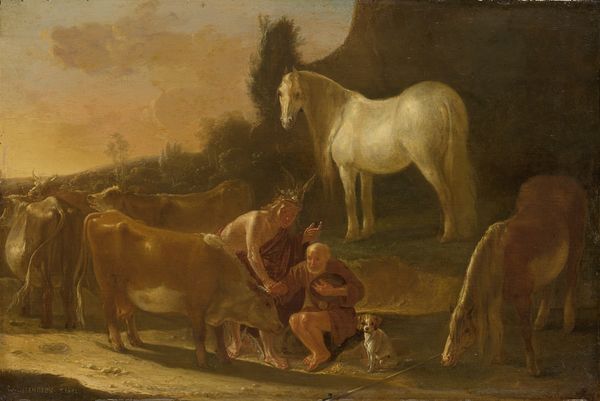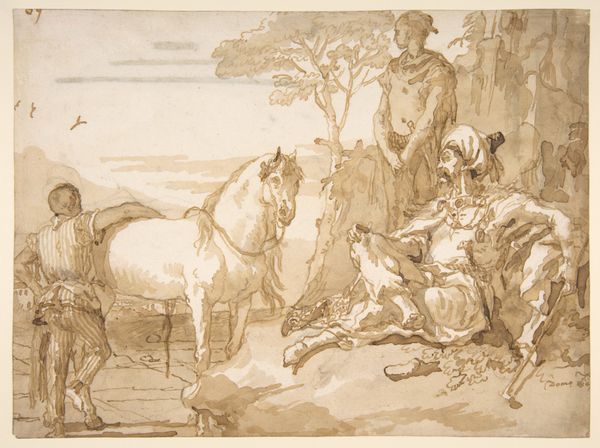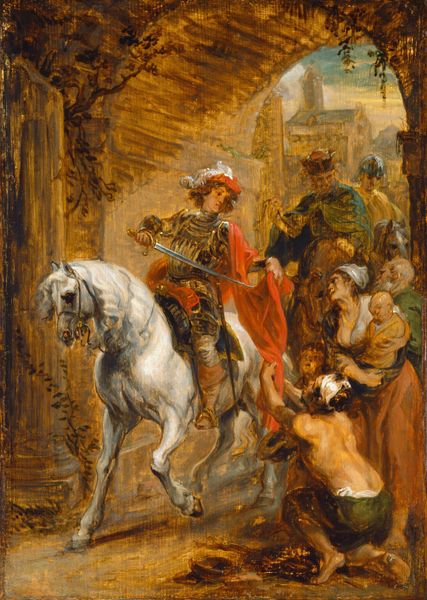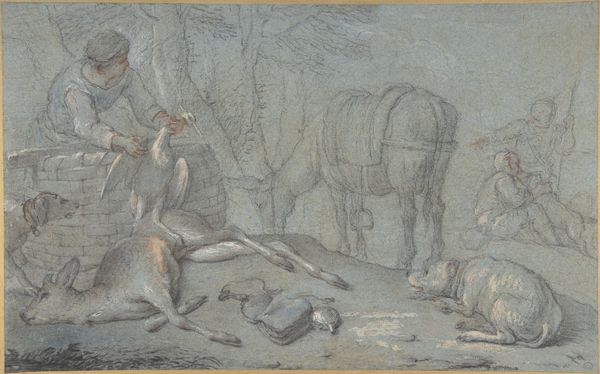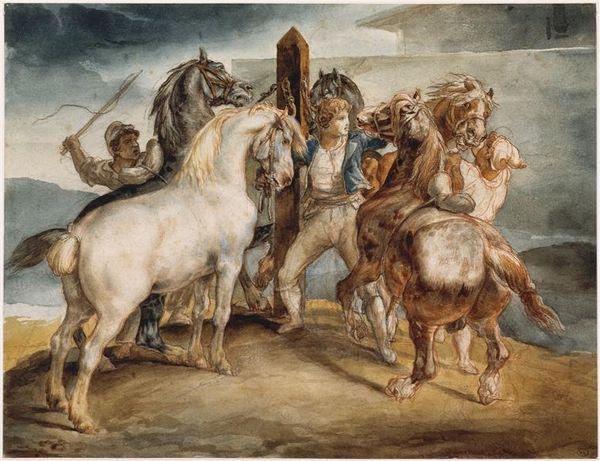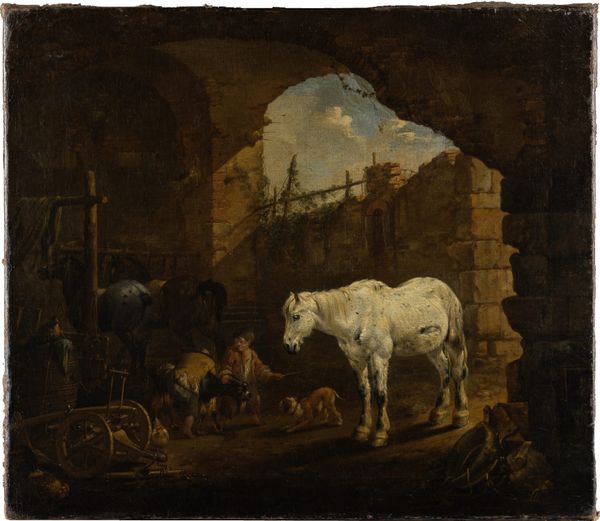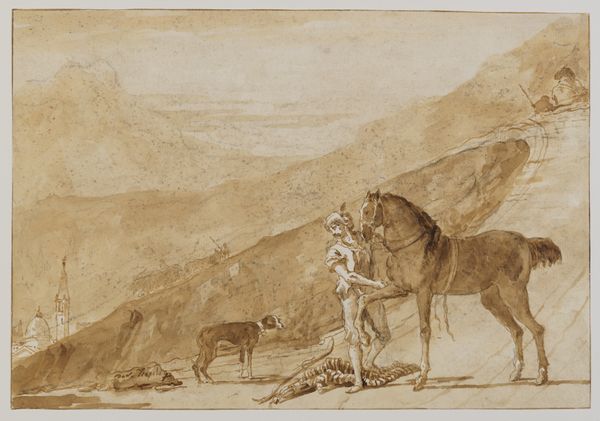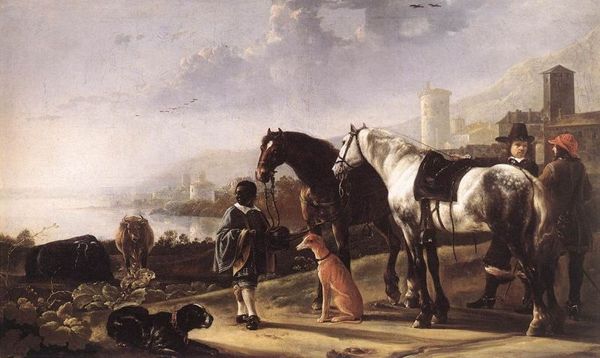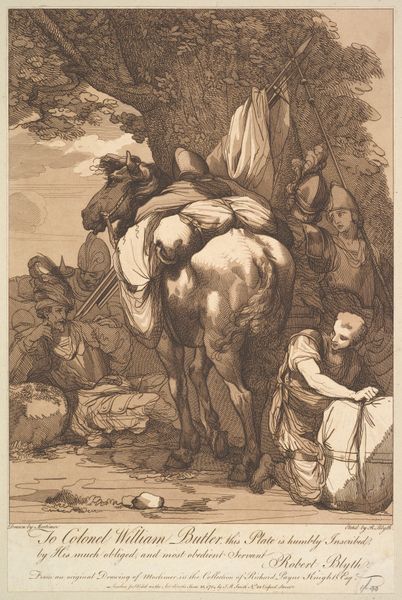
Arabian Stallion led by two Arabians to breed
0:00
0:00
theodoregericault
Musée Bonnat, Bayonne, France
drawing, pencil, charcoal
#
portrait
#
drawing
#
animal
#
landscape
#
figuration
#
oil painting
#
romanticism
#
pencil
#
horse
#
line
#
genre-painting
#
charcoal
#
history-painting
#
realism
Dimensions: 22.2 x 28.3 cm
Copyright: Public domain
Curator: Here we have a drawing by Théodore Géricault titled "Arabian Stallion led by two Arabians to breed." It's currently housed at the Musée Bonnat in Bayonne, France. Editor: My first thought is of its raw, unfinished quality. The earth-toned hues and the loose linework create a sense of movement and untamed energy, despite being just a drawing. Curator: Exactly. Though rendered in pencil and charcoal, it has the presence and weight one typically associates with oil painting. Géricault masterfully captures the muscularity of the horse, imbuing it with power and a kind of nobility, wouldn’t you say? The image teems with signifiers. Editor: I’d agree. The Arabian horse, particularly within the context of early 19th-century France, held a particular cultural significance. Its elegance and speed represented a connection to the exotic "Orient", embodying a romanticized vision of strength and freedom, values cherished then and now. Is there anything to know about the location, though? The way it is framed… Curator: Absolutely. The drawing features, centrally, an Arabian stallion handled by figures presumably of Arabian origin, most likely in preparation for breeding. The composition reflects, in part, European fantasies about Arabian culture during that period, often projecting onto it images of nobility, simplicity and a close bond with nature. In this sense, Géricault may be critiquing the Western tendency to romanticize and idealize non-European cultures through symbolic images of noble creatures and “exotic” people. Editor: So it’s interesting to reflect upon what the Western artistic traditions say, and, in their selection and celebration, implicitly deem “artistic”. What strikes me, still, is that despite its historical distance and complex cultural connotations, this drawing retains an immediacy. The vitality of the stallion is palpable. Curator: Yes, and the composition itself, with the stallion taking center stage, underscores its cultural and symbolic value. It almost suggests that the animal is more important or dignified than the human figures attending to it. The play of light and shadow, created with minimal lines, contributes significantly to this hierarchical emphasis. Editor: This has shifted my understanding from aesthetic appreciation to critically examining its undercurrents of power and perception. I am more aware of its implications of how cultures viewed each other during the rise of European colonialism. Curator: Precisely! A single drawing, imbued with symbols that reach into our collective past, challenges us to consider whose stories are told, how, and why.
Comments
No comments
Be the first to comment and join the conversation on the ultimate creative platform.
